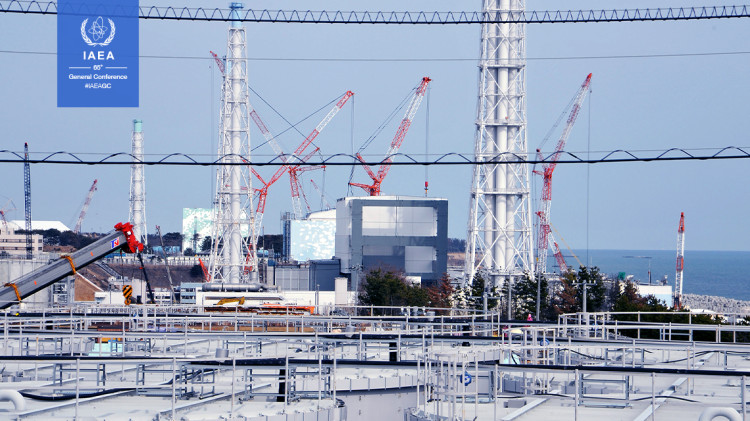Progress in decommissioning of the Fukushima Daiichi Nuclear Power Plant, improved assessment of external hazards such as earthquakes, regulatory and safety upgrades implemented at nuclear power plants globally as well as the safety of advanced and innovative reactors were among topics discussed at the annual International Nuclear Safety Group (INSAG), held today on the side-lines of the 65th IAEA General Conference.
“Following the accident at Fukushima Daiichi nuclear power plant ten years ago, many parties across the globe demonstrated their commitment to enhance nuclear safety through initiatives such as stress tests conducted at nuclear power plants, with tangible results. Many safety improvements have been developed and are being continuously implemented,” said Shahid Mallick, Acting Director of the Office of Coordination at the Department of Nuclear Safety and Security.
Participants, high-level experts who provide authoritative advice and guidance on safety issues to the global safety community, also discussed global efforts since the 2011 Fukushima accident to strengthen regulatory oversight, put in place effective accident management as well as improvements in human and organisational factors, public communication and post-accident recovery measures.
“Today is about reflecting on the progress made, and also to take forward the reliable peaceful use of nuclear energy,” said Mike Weightman, Chair of the event and member of INSAG.
Panellists agreed that more precise understanding of the accident, improvements related to the regulation systems, enhancement of scientific knowledge, development of safe decommissioning and reasonable waste management are among the key areas where progress has been made during the last decade. The International Conference on a Decade of Progress after Fukushima-Daiichi: Building on the Lessons Learned to Further Strengthen Nuclear Safety, to take place 8-12 November 2021, in Vienna, will be a platform to discuss these topics further, said Gustavo Caruso, Scientific Secretary of the Conference. “We need to maintain this momentum. The conference is our opportunity to identify additional actions for strengthening safety worldwide for the future.”
You can register to the event through this link.
“10-years after the accident, the situation has improved dramatically and as a result we can enter in all reactor buildings and get more information inside these buildings,” said Masaya Yasui, a member of INSAG and the Nuclear Regulation Authority of Japan (NRAJ) Secretariat. “The second phase of accident investigation and analysis of Fukushima Daiichi led by the NRAJ commenced in September 2019 and is continuing. Additional information and knowledge being obtained will be shared internationally.”
Other panellists shared the implementation of best practices in their national regulatory systems as a result of lessons learned from the accident. Basma A. Shalaby highlighted Canada’s holistic review and assessment to regulation, adopted by the industry, at all levels of the defence in-depth approach, which assures prevention and mitigation of accidents at several engineering and procedural levels.
The INSAG meeting also covered progress over the last decade in advanced and innovative reactors such as small modular reactors (SMRs).
Aybars Gurpinar underscored the importance of inherent safety in these types of new reactors. “The tendency after any accident is to go to safer technologies. The initiator of the Fukushima Daiichi [accident] were external hazards. Therefore, technology became more important than ever before. Today, climate change and the positive attributes of nuclear energy are leading towards providing better protection against external hazards.”
In concluding the event, panellists highlighted the importance of the forthcoming Conference and their readiness to continue discussions on the impact of climate change, the role of nuclear energy, the value of new digitalized reactors, the lessons learnt from the accident in radiation protection, the prospects to improve communication based on knowledge and more.








